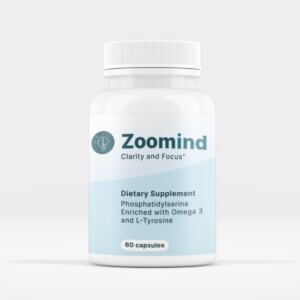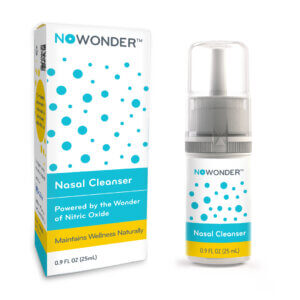 Let’s go back for a moment to that familiar feeling when your throat’s a little scratchy, your nose is just starting to feel stuffy, and you know what’s coming. A cold – again!
Let’s go back for a moment to that familiar feeling when your throat’s a little scratchy, your nose is just starting to feel stuffy, and you know what’s coming. A cold – again!
You’re not alone if you’ve ever wondered why we still can’t seem to shake off the common cold despite all our medical advances. For decades, scientists have been trying to crack the code and find ways to protect against colds. We’ve cured or controlled bacterial infections like pneumonia and tuberculosis, but viruses like the cold continue to slip through. Antibiotics were once hailed as a miracle, but it turns out they do nothing against viruses, which took many people (and plenty of trial and error) to understand.
So, where does that leave us?
First line of defense: keep the virus out
Unlike bacteria, viruses don’t grow on their own. They hitch a ride on hands, surfaces, droplets from a cough or sneeze, and hunt for a way into your body. One of the most common routes is the air we take in with each breath.
That’s why keeping surfaces clean, washing hands, wearing masks, and avoiding crowded spaces can help. But let’s be realistic. In the swirl of daily life, we can’t live in a bubble. We talk, breathe, commute, hug our kids, and travel. Eventually, a virus finds its way in.
So the idea is simple. Make the nose – the first point of entry – as unfriendly to viruses as possible, without harming the body’s own tissue. This is where two types of nasal sprays have started to stand out: one using iodine, and the other using nitric oxide. Both are backed by science and offer different ways of tackling the same goal: ways to protect against colds.
Nasodine®: Disinfecting with iodine 
Nasodine® is a nasal spray that uses povidone-iodine (PVP-I), a tried-and-true disinfectant used in hospitals for decades. This version is safe for nasal use, delivering a gentle dose (just 0.5%) that coats the nasal passages.
What happens next is kind of like what hand sanitizer does for your skin. The iodine kills bacteria and viruses by damaging their proteins and genetic material, rendering them harmless within seconds. Studies even show that Nasodine® can neutralize viruses like SARS-CoV-2, the one that causes COVID-19, within moments of contact.
So if you’re looking for ways to protect against colds, a quick spray before heading into a busy store or a crowded train could help lower your risk of catching something. It’s not a force field, but it might give you an extra layer of security.
NOWONDER™: Boosting Your Body’s Own Defenses
 NOWONDER™ works differently. It uses nitric oxide (NO), a natural compound your body already produces. Your nasal sinuses actually release small amounts of nitric oxide to help kill invading pathogens. This spray gives that natural process a little boost.
NOWONDER™ works differently. It uses nitric oxide (NO), a natural compound your body already produces. Your nasal sinuses actually release small amounts of nitric oxide to help kill invading pathogens. This spray gives that natural process a little boost.
When you use NOWONDER™, you’re releasing a controlled burst of nitric oxide into your nasal passages. This can disable viruses and bacteria in several ways, damaging their membranes, interfering with their genetic material, and generally making it harder for them to do any harm.
Because nitric oxide is already something your body makes, it tends to be well tolerated. For people with iodine allergies or thyroid concerns, NOWONDER™ is a smart alternative.
Which one is right for you?
Let’s be clear, these aren’t competing products. We don’t have to choose sides. In fact, many people could benefit from using both (though not at the same time) as part of a broader strategy for ways to protect against colds.
Here’s a quick guide:
- Use Nasodine® if you want a disinfectant-based solution that’s easy to use and widely available.
- Use NOWONDER™ if you’re sensitive to iodine or want a product that mimics the body’s own defenses.
- Use both (alternating) if you’re after a belt-and-braces approach, especially during cold and flu season.
Whichever path you choose, the goal is the same: make your nose a place where viruses can’t stick around.
Why it’s hard to treat colds after infection

Unfortunately, the cold isn’t caused by just one virus. There are over 200 types that can trigger cold-like symptoms, and they mutate quickly. That’s why we don’t have a “cure,” and why most cold treatments only help manage the symptoms.
That makes prevention even more valuable, which brings us full circle to the idea that ways to protect against colds may be less about treatment, and more about catching the virus before it catches you.
FAQs: Simple Answers to Common Cold Questions
Why is the common cold so tricky to treat?
The common cold isn’t just one virus; it’s hundreds. Around 75% are from the rhinovirus family, but the rest come from other virus groups. They mutate often, which means even if your body fights one off, the next one might be totally different. That’s also why vaccines don’t work well for colds; they’d need to be redesigned constantly.
How does a cold virus actually infect you?
Colds usually start in your nose. The virus enters through your nose, mouth, or eyes, often via droplets from a cough or sneeze, or from touching your face after touching a contaminated surface. Once inside, the virus locks onto cells in your nasal passages and hijacks them to make millions of copies. This causes inflammation, mucus, and all those classic cold symptoms.
Why can’t antibiotics treat viral infections?
Because viruses aren’t bacteria. Antibiotics are designed to attack full cells, and viruses aren’t full cells, they’re tiny packets of genetic code. Cold viruses are made of RNA and can’t be targeted in the same way bacteria can. That’s why taking antibiotics for a cold doesn’t work and can actually cause harm in the long run.
Are there any antiviral drugs that work on cold viruses?
Not really. While there are antivirals for other viruses like HIV (e.g., Ziagen, Trizivir) and herpes (e.g., Zovirax, Valtrex), cold viruses are too diverse and fast-changing for one treatment to work. That’s why prevention methods, like Nasodine® and NOWONDER™, are worth exploring if you’re serious about ways to protect against colds.







